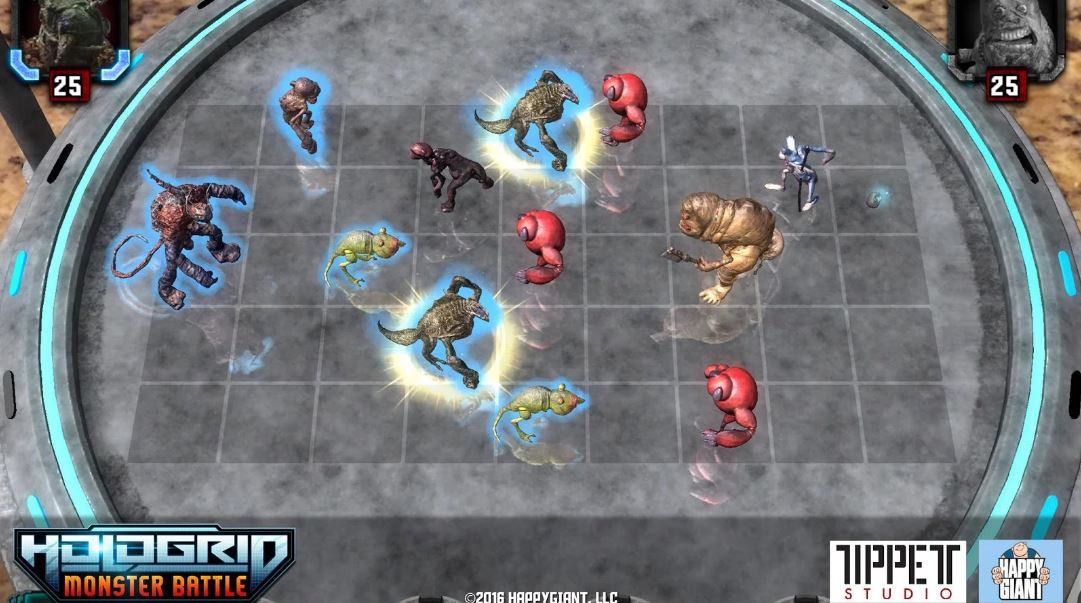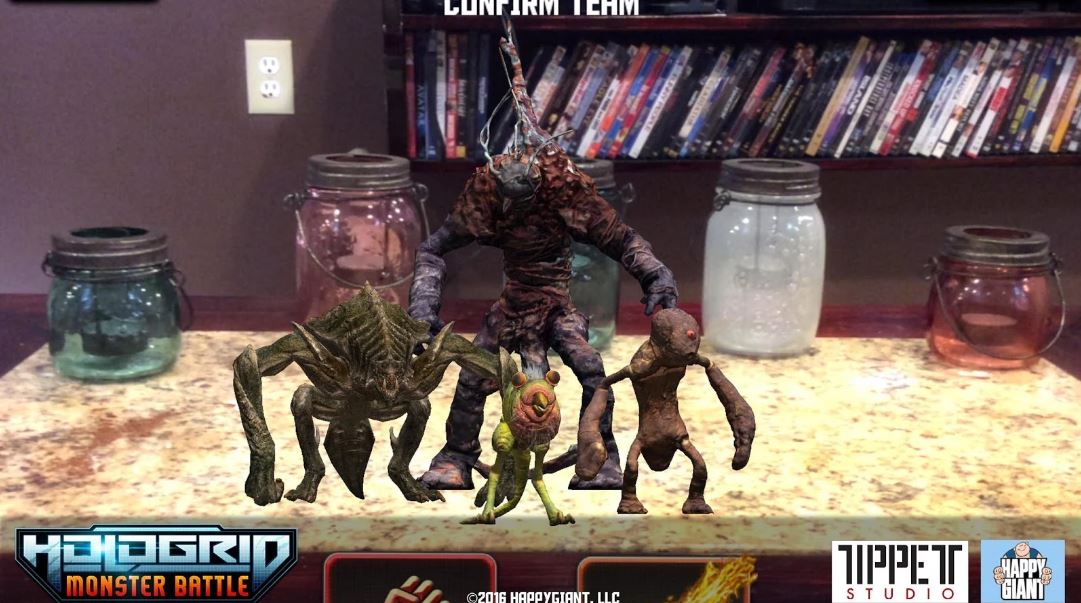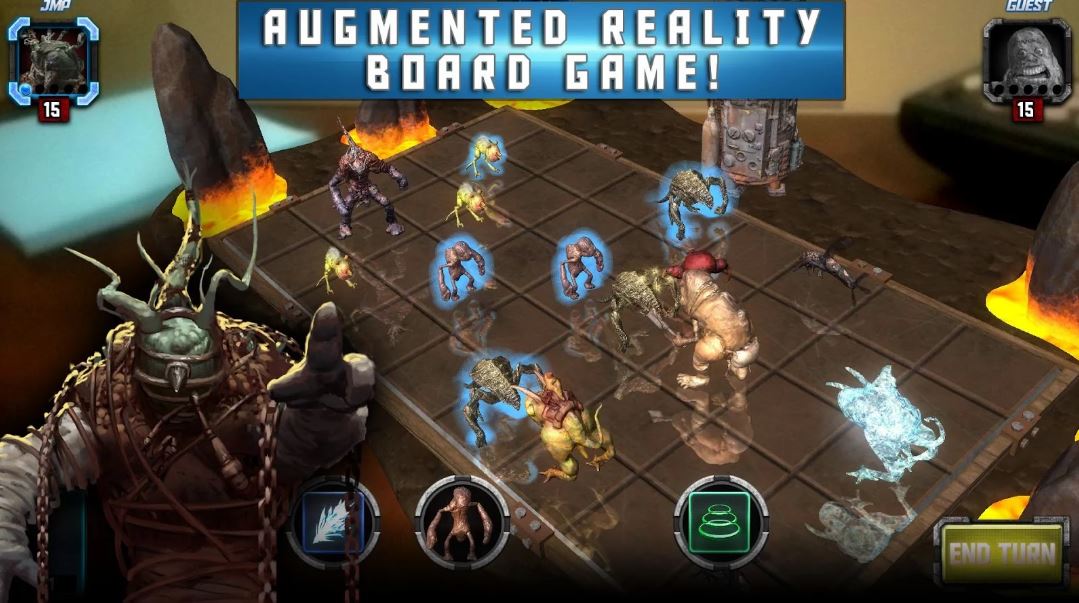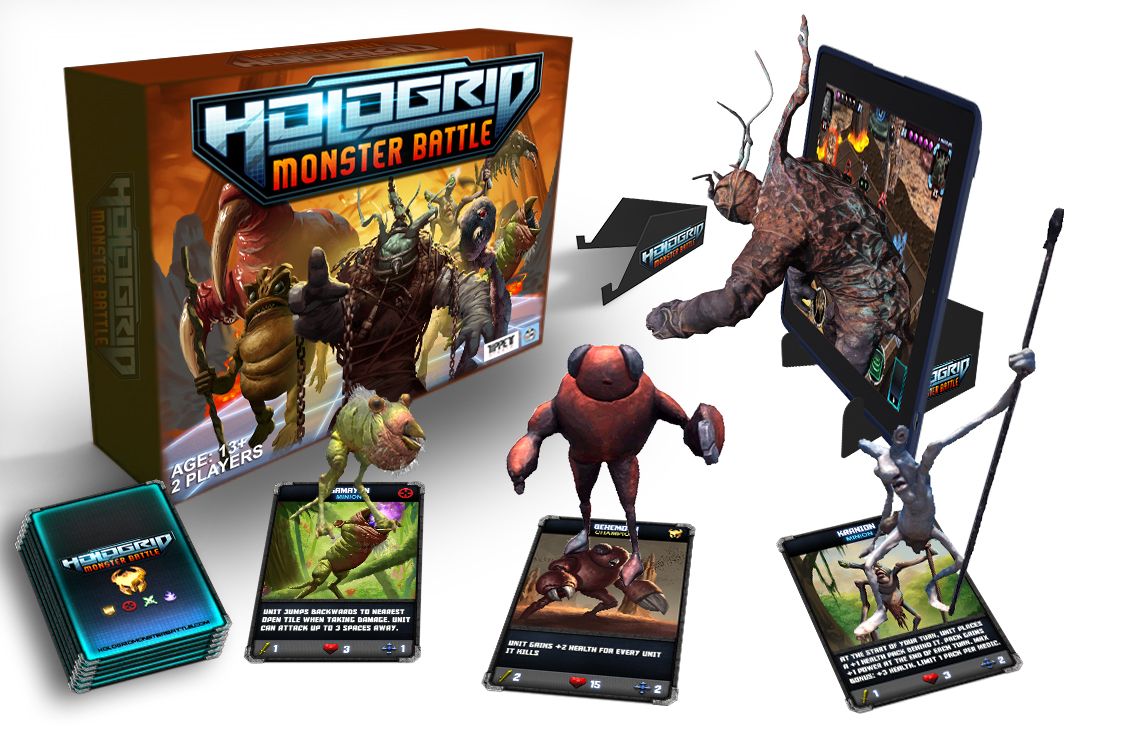Let’s get it out of the way up front and early: HoloGrid: Monster Battle from HappyGiant and Tippett Studio looks similar to the hologram chess scene in Star Wars because the same guy that created that scene also created the monsters in this game. Phil Tippett (Jurassic Park, Star Wars, Dragonheart, Willow) is an Academy Award-winning visual effects designer with decades of experience creating monsters and visual designs for some of the most iconic film franchises of all-time.
When I visited his studio last year to see a pre-release preview build of HoloGrid in action, he also showed me the real-life models of the creatures from the game that he created first. After making those, they were then scanned with photogrammetry to construct the grotesque and articulated character models you see in the final game. It’s a unique way of building a game world and the results are extremely satisfying visually.
After getting funded on Kickstarter to the tune of over $100,000, the game is now finally released for both iOS and Android devices. The app is available for free, but in order to play you also need to purchase the card packs as well. The card packs are sold on Amazon for $30 and come with two stands for phones or tablet devices, along with a rule sheet, and two decks of cards. This way you can play with a friend locally even if you only purchase one box.
Each deck includes three champion creatures, nine minions, five spells, and a board card used to display the game. Since this is a hybrid card game and augmented reality (AR) holographic board game, you’ll use your device in conjunction with the cards to enjoy the experience. Although if you want, you an disable the AR features and just play it like a standard mobile game.
At the main menu you select to either play against the A.I. alone, with a friend locally or online, or play a random person online. From there you construct your deck by placing cards in front of your device’s camera. Each game deck consists of a single champion, three minions, and two spells. Since you’ve got more than the needed amount in each category, you’re afforded a bit of customization flexibility.
Unfortunately, that seems to be all there is for cards. In the realm of most card games like Magic: The Gathering, Yu-Gi-Oh!, or digital excursions such as Dragon Front or Hearthstone, decks consist of at least twice as many or more cards. When your entire deck is only 17 cards and there are only six different total options of those cards that can be used in any individual battle, it feels limiting.
Luckily the animations are wonderful and the attention to detail afforded each creature really shows through. As a technical marvel, it gets the job done. As a deep, immersive, and engaging card game with AR integration, it isn’t revolutionary.
The goal of each match is to destroy the opposing player’s champion. Every turn, you’ll receive five mana points, which are used to summon new creatures, move monsters, cast spells, and attack with your summoned monsters. In this way, everything you do is part of the meta-game of resource management.
Monsters take the form of one of five different class types, ranging from either Champion, Fighter, Shooter, Specialist, or Tank. Crafting a diverse army is recommended to address whatever your enemy throws at you. Each unit has a defined health pool, attack value, and movement points.
When playing your creature cards, you can only summon a monster in a square that is adjacent to another friendly monster you already own. All attacks provoke counter attacks, unless the attacked monster is killed by the initial attack. You can also swap a card from your hand to your deck.
Each card has some sort of special attribute as well that helps it stand out from the rest. In the case of the Carnifex champion, he buffs all adjacent monsters with extra attack power. The Strut is a ranged shooter minion that attacks any monster located in a straight line in front of it, regardless of distance. Then the Vanguard gets a bonus to its attack if it doesn’t move, making it a great tank minion.
One issue that I found is that you can only see a monster’s health, attack, and movement stats if you scan it into the game. The physical cards themselves don’t actually display any information other than their special ability, name, and class type. It doesn’t impact gameplay, but it seems like an odd stylistic omission. The image below shows the digital cards — the physical ones don’t have the information at the bottom. This could be due to the need for balancing patches and updates that may alter stats slightly.
Overall the gameplay gets the job done and the novel aspect of HoloGrid combining both the digital and physical world together is enough to make it a fun distraction for fans of the genre, but it lacks the depth and diversity to really keep you coming back for more. I’d have liked to have seen at least twice the number of cards to build a deck from, some expansion packs of some kind, or at least a bit more tactics in the strategies. If you’ve got someone to play with locally that loves card games, it’s worth checking out.
You can download the free app for both iOS and Android and purchase the required card pack from the official website or Amazon for $30. Read our Game Review Guidelines for more information on how we arrived at this score.





























